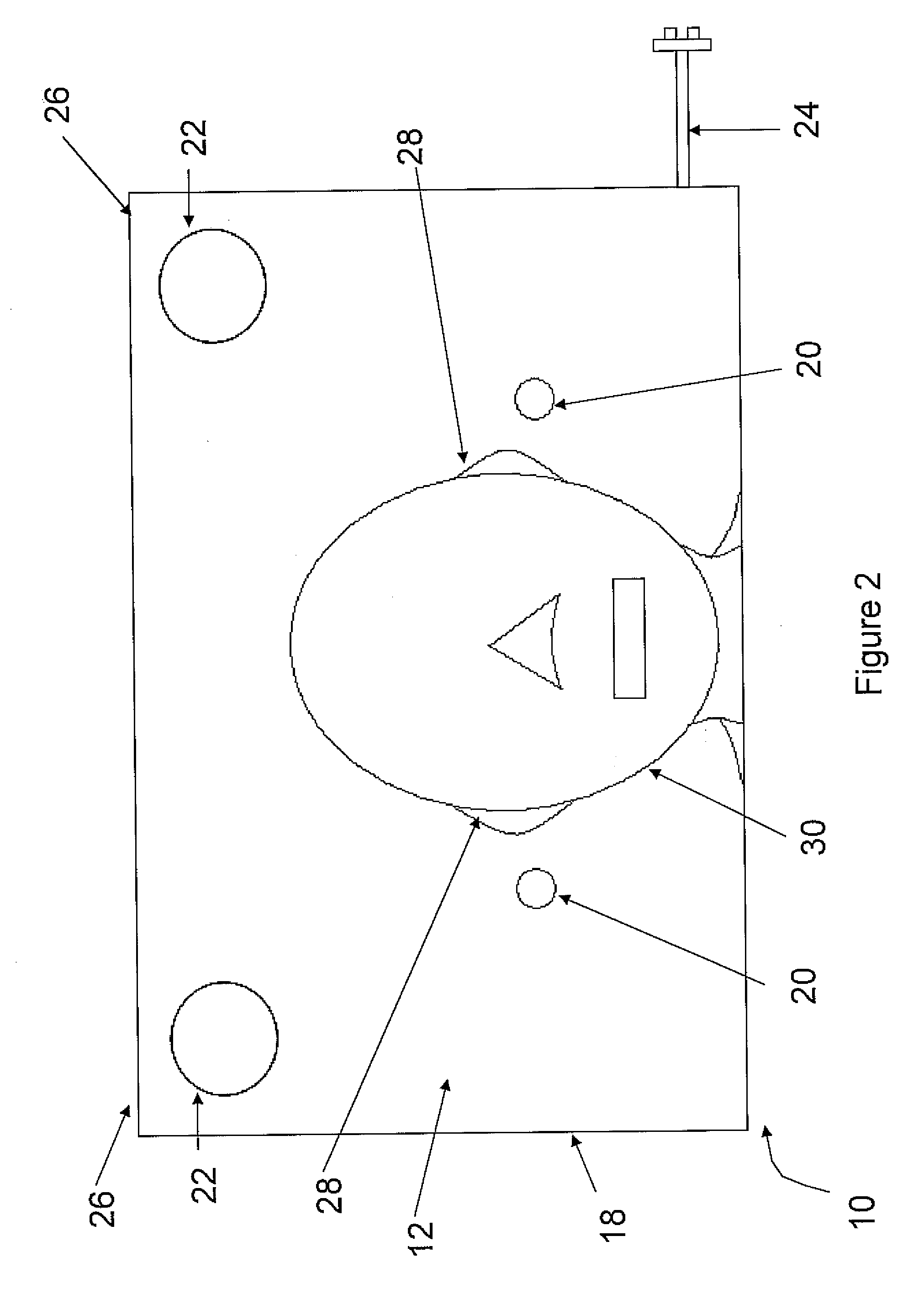Electronic pillow for abating snoring/environmental noises, hands-free communications, and non-invasive monitoring and recording
a technology of electronic pillow and environment, applied in the field of electronic pillow, can solve the problems of stress and social nuisance, loss of productivity in the work environment, sleep disruption,
- Summary
- Abstract
- Description
- Claims
- Application Information
AI Technical Summary
Benefits of technology
Problems solved by technology
Method used
Image
Examples
example 1
Multiple-Channel Broadband Feedforward Active Noise Control
[0045]A multiple-channel feedforward ANC system uses one reference microphone, two loudspeakers and two error microphones independently. The multiple-channel ANC system uses the adaptive FIR filters with the 1×2×2 FXLMS algorithm [1] is shown in FIG. 5. The reference signal x(n) is sensed by reference microphones in the reference sensing unit. Two error microphones (located in the pillow unit) obtain the error signals e1(n) and e2(n), and the system is thus able to form two individual quiet zones centered at the error microphones that are close to the ears of sleeper. The ANC algorithm used two adaptive filters W1(z) and W2(z) to generate two anti-snores y1(n) and y2(n) to drive the two independent loudspeakers (also embedded inside the pillow unit). In FIG. 5, Ŝ11(z), Ŝ12(z), Ŝ21(z), and Ŝ22(z) are the estimates of the secondary path transfer functions using both on-line or offline secondary path modeling techniques describ...
example 2
Adaptive Acoustic Echo Cancellation
[0048]Speakerphone or hands-free phone has become important equipment because it provides the convenience of hands-free conversation, especially for the handicapped and patients in hospital beds. For reference purposes, the person using the speakerphone is the near-end talker 60 and the person at the other end is the far-end talker 62. In FIG. 6, the far-end speech is broadcasted through one or two loudspeakers inside the pillow unit. Unfortunately, the far-end speech played by the loudspeaker is also picked up by the microphone(s) inside the pillow, and this acoustic echo is returned to the far end that annoying the far-end talker. The function of adaptive acoustic echo cancellation is to reduce this undesired echo.
[0049]The block diagram of an acoustic echo canceller is illustrated in FIG. 7 [4]. The acoustic echo path S(z) includes the transfer functions of the A / D and D / A converters, smoothing and anti-aliasing lowpass filters, speaker power am...
example 3
Signal Processing Techniques for Efficient Recording and Non-Invasive Monitoring
[0051]The most important constituent in efficient recording and non-invasive monitoring is the signal activity detector (SAD). The SAD identifies the background noise only periods so that an accurate analysis and recording of the desired signal can be done. The basic rule is that to estimate the statistics of the background noise, it is always desirable to process and record only those signal samples which have a high probability of containing no background noise. To achieve this, an adaptive energy threshold which marks the probable boundary between noise samples and noisy desired signal samples is established by monitoring the energy on a sample by sample basis.
[0052]The window length technique uses windows of different sizes like the very long window, a medium window, and a short window to detect signal activity, i.e., signal power, noise floor and detection threshold (thres). These variables are repr...
PUM
 Login to View More
Login to View More Abstract
Description
Claims
Application Information
 Login to View More
Login to View More - R&D
- Intellectual Property
- Life Sciences
- Materials
- Tech Scout
- Unparalleled Data Quality
- Higher Quality Content
- 60% Fewer Hallucinations
Browse by: Latest US Patents, China's latest patents, Technical Efficacy Thesaurus, Application Domain, Technology Topic, Popular Technical Reports.
© 2025 PatSnap. All rights reserved.Legal|Privacy policy|Modern Slavery Act Transparency Statement|Sitemap|About US| Contact US: help@patsnap.com



